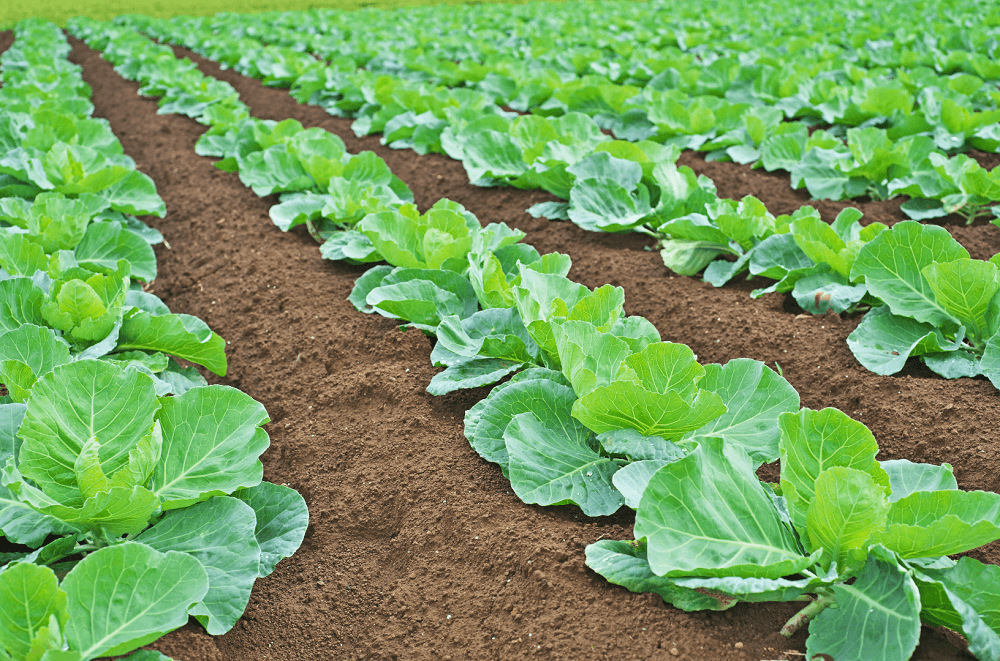On October 19, 2021, the US EPA established tolerances for Propamocarb in the brassica head and stem vegetable group. Objections and requests for hearing must be received on or before December 20, 2021.
Propamocarb hydrochloride (CAS Number 25606-41-1) is a fungicide used to control Pythium spp. and Phytophthora spp. on turf, outdoor woody, and herbaceous ornamentals. The fungicide is formulated as a soluble concentrate or liquid. Propamocarb hydrochloride is applied as a bare-root dip, drench, and foliar application. It has low acute toxicity via the oral, dermal, and inhalation routes, but is not a dermal irritant nor a dermal sensitizer.
The US Environmental Protection Agency (EPA) has announced the filing of a pesticide petition by the American Spice Trade Association which requests that 40 CFR 180.499 be amended by establishing tolerances for residues of the fungicide propamocarb in or on commodities within the brassica head and stem vegetable group at 15 parts per million (ppm). In making its tolerance decisions, the EPA seeks to harmonize US tolerances with international standards whenever possible, consistent with US food safety standards and agricultural practices. The EPA considers the international maximum residue limits (MRLs) of the Codex Alimentarius Commission (Codex) for cabbage, cauliflower, and broccoli at 3 ppm, 2 ppm and 1 ppm, respectively but harmonization is not possible because US growers could have violative residues despite legal use of propamocarb according to the label. Therefore, the EPA makes this determination based on an analysis of the toxicology studies and then conducting detailed exposure and risk assessments.
The EPA has established tolerance for propamocarb residue (40 CFR Part 180) as specified in Table 1 and amended the regulation 40 CFR 180.499 Propamocarb; tolerances for residues by adding a new tolerance to paragraph (a).
Table 1 - Maximum residue limits for Eugenol in aquaculture products according to Japan’s regulations
| Commodity | Tolerance limits (ppm) |
|
Vegetable, Brassica, Head and Stem, Group 5-16 |
15 |
This regulation is effective October 19, 2021. Objections and requests for hearing must be received on or before December 20, 2021 and must be filed in accordance with the instructions provided in 40 CFR part 178.
What do these changes mean?
This update has the potential to affect agriculture producers, food manufacturers, and pesticide manufacturers. Any imported foods destined for the United States must not be found to contain propamocarb at levels exceeding the tolerance limits. To ensure compliance with food safety regulations, food producers should seek professional advice.
SGS is committed to keeping you informed of regulation news and developments. Leveraging our global network of laboratories and food experts, SGS provides a comprehensive range of food safety and quality solutions including analytical tests, audits, certifications, inspections, and technical support. We continually invest in our testing, capability, and state-of-the art technology to help you reduce risk, and to improve food safety and quality. For more information, please visit our website: www.foodsafety.sgs.com.
For enquiries, please contact:
Naovarat Dachprasat
R&D Chemist, Food Technical Support Center
T: +66 2683 0541 ext. 2168, 2169





.webp?width=1644&height=1254&name=Food%20Safety%20Dashboard%201%20(1).webp)
